
Bible, History, Archaeology
Bible,
History,
Archaeology
The Hasmoneans,
between Hellenism and Judaism
Contents:
Introduction – The Story – The Septuagint – The sources – The Seleucid Empire – The Hasmonean century – The Hasmonean dynasty
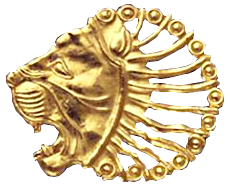
Image opposite: a gold clothing pin from the Achaemenid Empire. Leiden Museum, Netherlands. Theo Truschel.
The Temple of Jerusalem was then rebuilt in difficult circumstances and inaugurated at the feast of Pesach in 515 BC (Ezra 5:1, etc.).
The Story
After the end of the Persian Empire around 330 B.C. under Alexander the Great, Judea quickly fell under the yoke of the Hellenistic kingdoms, first the Lagids and then, after the battle of Panion (now Banyas) in 200 B.C., the Seleucids, the new geopolitical powers of the time.
Little or nothing is known of this long period in the region until the Maccabean revolt of 167 BC, when the Jews reappeared on the stage of history. It was during this long sequence that a major shift took place. The Greek world and its thinking took over the entire region. The Septuagint, the Greek translation of the Torah, was written in Alexandria, Egypt, at the end of the third century. It enabled a new reading of the Torah using Greek vocabulary and concepts, and was warmly welcomed throughout the diaspora.
See the Books of the First Alliance page →
Yet later, when Judaism came up against Christianity, this translation, known as the Septuagint, prompted warnings from the great Sages of Israel against the dominant Greek ideology.
The threat is palpable and the danger real that Tradition will be lost. Education, habits of dress, culture and even worship are changing. A gymnasium, a agora were built in Jerusalem. Young people became interested in philosophy and moved away from the teachings of their Fathers. A new literature developed, and a new framework of thought was established. Greek philosophy brought new mental classifications and a new language. It would subtly label Judaism as a religion, trapping Jewish life and thought in a straitjacket. It established new categories of thought, leading a large part of Jerusalem's elite to worship at the Temple without any problem, and then to go to the gymnasium, the Temple having become merely the site of a practice identified with a well-defined area of Jewish life, but not exclusive to other practices considered compatible. We're moving towards a new paradigm, one that allows us to move back and forth between what has become religious and profane. The porosity of this boundary is antithetical to the injunction of the God of Israel to live in this tension of separation (kadosh in Hebrew) as himself is separated, which has since been awkwardly translated as «holy».
 The Septuagint
The Septuagint
The oldest Greek translation of the Hebrew Bible is called the Septuagint. Aristaeus, obviously a 2nd-century Jew from Alexandria, has left us an account of this unprecedented undertaking. In his Letter (pseudepigrapha?) to his brother Philocrates, Aristaeus reports that the five Books of the Hebrew Law, i.e. the Torah (Pentateuch), were translated by 72 «masters in Judaic letters, but also adept in Hellenic culture», six from each tribe, who came from Jerusalem to Alexandria at the request of King Ptolemy II Philadelphus (reigned 285-246 BC), and his librarian.C.) and his librarian, Demetrios of Phaleros (d. c. 280), one of the founders of the Library of Alexandria.
Image opposite: a Jewish writer holding a Torah scroll. Juan Aunion 1387802840.
The sources
When it comes to writing about the Hasmonean revolt, the literary corpus is sparse. We have four books in Greek. Firstly, two books of the corpus designated as the Maccabees. Le book II of the Maccabees is a five-volume summary by a certain Jason of Cyrene. It is dated to around 100 B.C., as Book I which itself comes from a priestly source. It is considered the most reliable text by historians. We then have the two books of Flavius Josephus, written two centuries later. Jewish War and Judaic Antiquities. He drew his information from sources hostile to the Hasmoneans.
The ruins of Gamla. The ancient Jewish fortified city of the Hasmonean era and the Great Revolt against the Romans. Golan Heights, northern Israel.
Gamla was founded by the Seleucids in the 3rd century BC. With the fall of the Seleucid Empire, the city came under Hasmonean control. King Alexander Jannaeus expanded the city in the 1st century B.C. In 66, Flavius Josephus became governor of Galilee and made Gamla his main stronghold. He consolidated the fortifications of several towns in the region, including Gamla, in anticipation of a Roman attack. © Rontav 1666760152.
The Seleucid Empire
We are in the second century BC. The regional context of the Seleucid kingdom is tense, with a huge war debt to settle with Rome (the Peace of Apamea -188) and the rise of a newcomer to its borders. The Seleucid kingdom, centered in Antioch, seemed to be wavering in on itself. Antiochos IV took power in 175 BC. During this period, corruption and violence reigned in Jerusalem between the various great families for control of the title and power of high priest. The office was normally hereditary among the descendants of Zadok, but during this period, for financial reasons, it was sometimes sold to the highest bidder by the Seleucid king.
In particular, the high priest had control over the Temple treasury, a fortune coveted by the Seleucid ruler at a time of chronic indebtedness. The political and religious elite were thus in the hands of unscrupulous parvenus. The reign of Antiochus IV also sounded the death knell for the favorable measures granted to the Jewish people by his father. In a difficult political context, when he had to retreat from Alexandria, which had been saved by Rome, Antiochos IV issued a violently anti-Jewish edict, rightly described as an edict of persecution. The Temple is dedicated to Olympian Zeus, the Greek god of the heavens.
Image opposite: a coin bearing the effigy of Antiochos IV featuring ΘΕΟΥ ΕΠΙΦΑΝΟΥΣ ΝΙΚΗΦΟΡΟΥ / ΒΑΣΙΛΕΩΣ ΑΝΤΙΟΧΟΥ King Antiochos, revealed god, bearer of victory«. © Classical Numismatic Group, Inc.
An altar was built, celebrating pagan cults with animals that were impure according to Jewish law. Shabbat and circumcision are forbidden, Torah scrolls torn up. Jewish worship was forbidden. Recalcitrant Jews were sought out, arrested and executed. Modern historians are at a loss to explain such relentlessness in a world reputed to be tolerant and open, but clearly only to other polytheistic cults. Was the king mad, exalted or did he perceive the Jewish cult as a threat to Greek civilization? Historians are lost in conjecture.
The Hasmonean century (167-63 BC)
 Image opposite: a lamp from the Hasmonean period (1st century BC) discovered in Jerusalem. Israel Antiquities Authority.
Image opposite: a lamp from the Hasmonean period (1st century BC) discovered in Jerusalem. Israel Antiquities Authority.
One man stood up against barbarism in 167. It was Mattathias, the «hero» of Modiin, where he had taken refuge after the persecutions in Jerusalem. Mattathias came from one of the priestly families, the Hasmoneans, from the small town of Modiin. He belonged to the first of the twenty-four classes of priests listed in the Torah. Father of five sons, one of whom, Eleazar, was killed in battle against the Seleucids in 162, he gave birth to three other sons who succeeded each other in military command and power: Judas (166-160), Jonathan (152-142) and Simon (142-134).
Hellenism turned this revolt into history's first religious war, labeling the Jewish way of life and its relationship with its unpronounceably named God, Judaism. This war, and the very way it is recounted in the texts that have come down to us, do not free us from the framework of thought imposed by the Greek world. Worse still, the liberators of Temple seem to have fallen into the Greek ideological mold.
The texts show Mattathias seized by anger at the collaboration of so many Jews in the new anti-Jewish decrees. He publicly executed a Jew ready to obey the royal order to sacrifice according to pagan rites. He fled to the mountains, surrounded by a small band of followers, and died shortly after the revolt broke out. He was succeeded by his son Judas, known as Maccabaeus, the third of his siblings. The «gesture» of Judas occupies more than five chapters in the book. 1 des Maccabées. He was the warlord of the family, the one who, surrounded by a dozen companions at the outset, found himself at the head of several thousand fighters, who defeated the Seleucid armies in pitched battles (Bethoron, Emmaus, Betsur...). After several battles, Judas succeeded in capturing Jerusalem.
 Image opposite: Horbat Ha-Gardi excavations at the presumed site of the tomb of the Maccabees. Israel Antiquities Authority.
Image opposite: Horbat Ha-Gardi excavations at the presumed site of the tomb of the Maccabees. Israel Antiquities Authority.
Judas then re-established Temple (25 kislev, December 164 BC). This victory was celebrated on the famous Jewish feast of Hanukkah, symbolizing the liberation of Jerusalem Temple which had been desecrated. Late Jewish tradition (3rd century C.E.) focused less on the military victory than on the ensuing purification of the Temple, from the miraculously recovered flask of oil that burned for eight days, the time needed to make the new holy oil. This oil was used to light the menorah, whose light is a symbol of the Torah.
The presumed remains (detail) of the Acra fortress at the Givati parking lot excavation site in Jerusalem. For a time, this Seleucid fortress resisted the assaults of Judas Maccabaeus. Israel Antiquities Authority (IAA).
The Hasmonean dynasty (152-63 BC)
The repeal of the Edict of Persecution and the appointment of a High Priest, accepted by all parties, brought calm for a time. But if the Hasmonean state that came into being in 152 was born of a revolution to save Torah values, what the Greeks called Judaism, Judas Maccabaeus' successors quickly distanced themselves from the movement's original aims and created a Greek-style state. Like the Hellenistic princes, they used religion as the basis for politics, combining the authority of the high priest with the powers of the people's ruler for the first time. Judas's brothers, Jonathan and Simon, agreed to enter the court of the Seleucid ruler and formally govern as his representatives, but without ever taking the title of king. They remained the high priests and ethnarchs of the Jewish people. This Greek state, which allowed for a certain degree of religious freedom, was rejected by a number of religious movements, including the Pharisees and Essenes, who disputed the legitimacy of the new priestly dynasty.
Image opposite: a slingstone bearing the name of the Seleucid leader who fought against the Hasmoneans was recently found in the southern hills of Hebron, in the West Bank, by the archaeology unit of the Israeli army's Civil Administration. On the stone, the name of Diodotus Tryphon - who ruled the Seleucid Empire between 142 and 138 BC - is inscribed in Greek. - is inscribed in Greek. It also bears the emblem of the Greek god Zeus © Spokesman for the Civil Administration.
It was Jonathan and Simon who gave the Hasmonean state its borders, taking advantage of the structural weaknesses of the Seleucid Empire. Jonathan undertook an active policy of conquest, pursued by all his successors. According to the narrative texts at our disposal, the Idumeans in southern Israel were converted by force.
Jonathan and Simon established a new dynasty. Simon built a family mausoleum at Modiin on a Greek model. However, the dynasty remained so fragile that Jonathan and Simon ended their lives murdered.
- Simon (142-134 B.C.), brother of Jonathan ;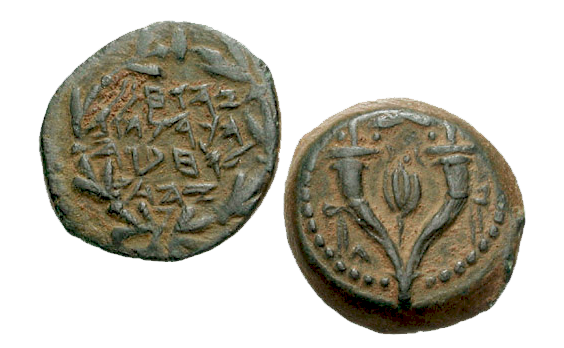
Image opposite: a coin of John Hyrcan I 135-104 BC.
Prutah. Obverse: «Yehohanan the High Priest and the Council of the Jews» on five lines within a wreath. Reverse: double cornucopia adorned with ribbons; pomegranate between the horns. Classical Numismatic Group, Inc.
- Aristobulus I (104-103), son of John Hyrcan I, assumed the title of king; ;
- Alexander Jannaeus (Alexander Jonathan) (103-76), brother of Aristobulus I; ;
 Image opposite: a copper coin, prutah, by Alexandre Jannée.
Image opposite: a copper coin, prutah, by Alexandre Jannée.
Obverse: BASILEWS ALEXANDROU (of King Alexander). Anchor set vertically.
Reverse: Aramaic legend between the grapes (Yehonathan the king). Wheel or star with eight grapes globulated in the center. cgb.fr
- Salome Alexandra (76-67), wife of Aristobulus I and then Alexander Jannaeus; ;
- Hyrcan II and Aristobulus II, sons of Alexander Jannaeus, disputed royal power and the office of high priest; ;
- Antigone II Mattathias (40 - 37), last son of Aristobulus II, Hasmonean king and high priest.
See the picture of the Hasmonean dynasty, its end, and the rise to power of Herod the Great →
John Hyrcan I (134-103) was the man who stabilized Hasmonean power. Taking advantage of the unrest in the Seleucid ruling family, he resumed territorial expansion and further extended the borders of the Kingdom of Israel. He seized part of Transjordan in 128 BC, Idumaea in 125 BC and Samaria, where around 108 BC he destroyed the temple of the Samaritans who had pledged allegiance to the Seleucids.
It was at this time that local coinage began to appear. John Hyrcan I struck him without depicting his face. He did not take the title of king. He also had the political intelligence to rally most of the anti-Hasmonean currents, such as the Pharisees, to his side, in order to appease his reign.
Then the dynasty became Hellenized; Hyrcanus is a Greek name, and his children began to bear double names. Aristobulus/Judas (104-103), Alexander Jannaeus/Jonathan (103-76), who inaugurated bilingual coinage, Hebrew and Greek. From then on, they were referred to as basileus, king in Greek. Literary tradition is extremely unfavorable to Alexander Jannaeus, who had the longest reign of the entire dynasty after that of his father Hyrcanus. He was regularly in opposition to the movements that had challenged the power of Jonathan and Simon, namely the Pharisees and Essenes. He is portrayed as a bloodthirsty, impulsive and depraved tyrant.
Image opposite: a portrait of Pompey the Great. Musée du Louvre, Paris. © Alphanidon.
Pompey was careful to double the political structure by appointing an adviser of foreign origin: Antipater was of Idumean origin. Herod's son, Herod, after many ups and downs, was recognized as «King of the Jews» by the Roman Senate in 40 B.C. He reconquered the country with Roman help until 37 B.C.
This is the end of the Hasmoneans.
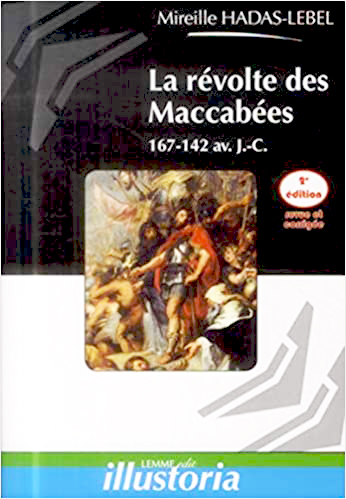
Find out more
Mireille Hadas-lebel, The Maccabean revolt
Lemme Edit-Maison, Illustoria collection. Paris, 2014.
The revolt led by Judah, nicknamed Maccabaeus («Martel»), against the Syrian Greek king Antiochus IV Epiphanes in 167 BC is the most significant event in the history of Judea in the Hellenistic period. This book examines the causes of the conflict and the effects of the Judean victory. Beyond the struggle for freedom of worship and the reconquest of the Temple of Jerusalem, the regained independence had important consequences for the whole of the Mediterranean East.



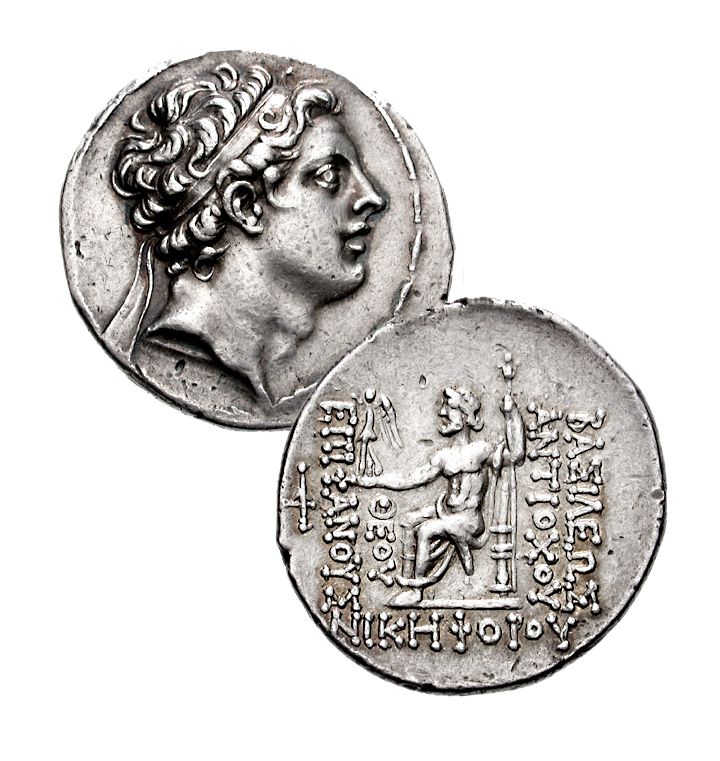
 Image opposite: a lamp from the Hasmonean period (1st century BC) discovered in Jerusalem. Israel Antiquities Authority.
Image opposite: a lamp from the Hasmonean period (1st century BC) discovered in Jerusalem. Israel Antiquities Authority.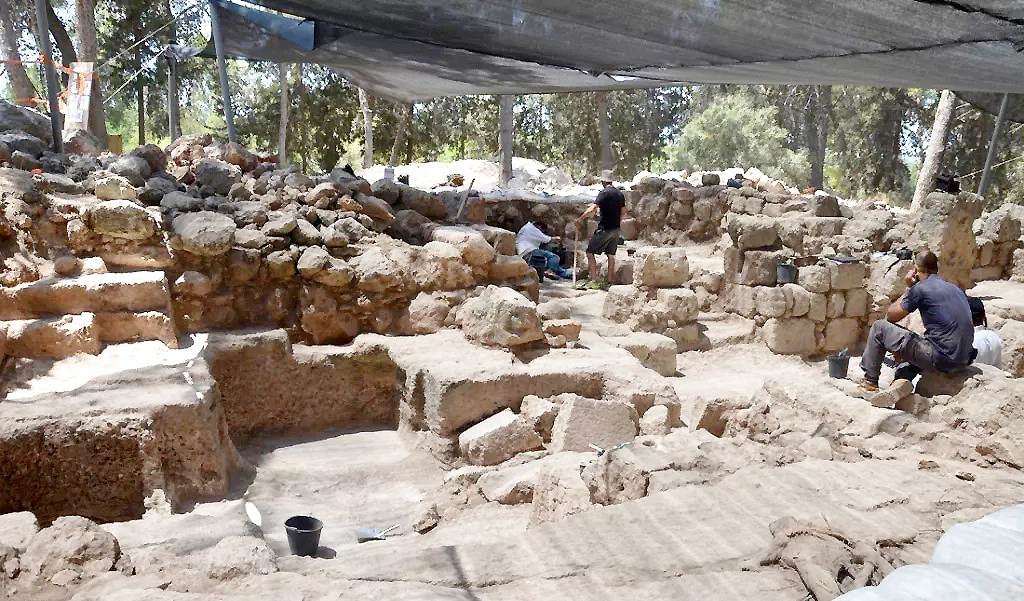 Image opposite: Horbat Ha-Gardi excavations at the presumed site of the tomb of the Maccabees. Israel Antiquities Authority.
Image opposite: Horbat Ha-Gardi excavations at the presumed site of the tomb of the Maccabees. Israel Antiquities Authority.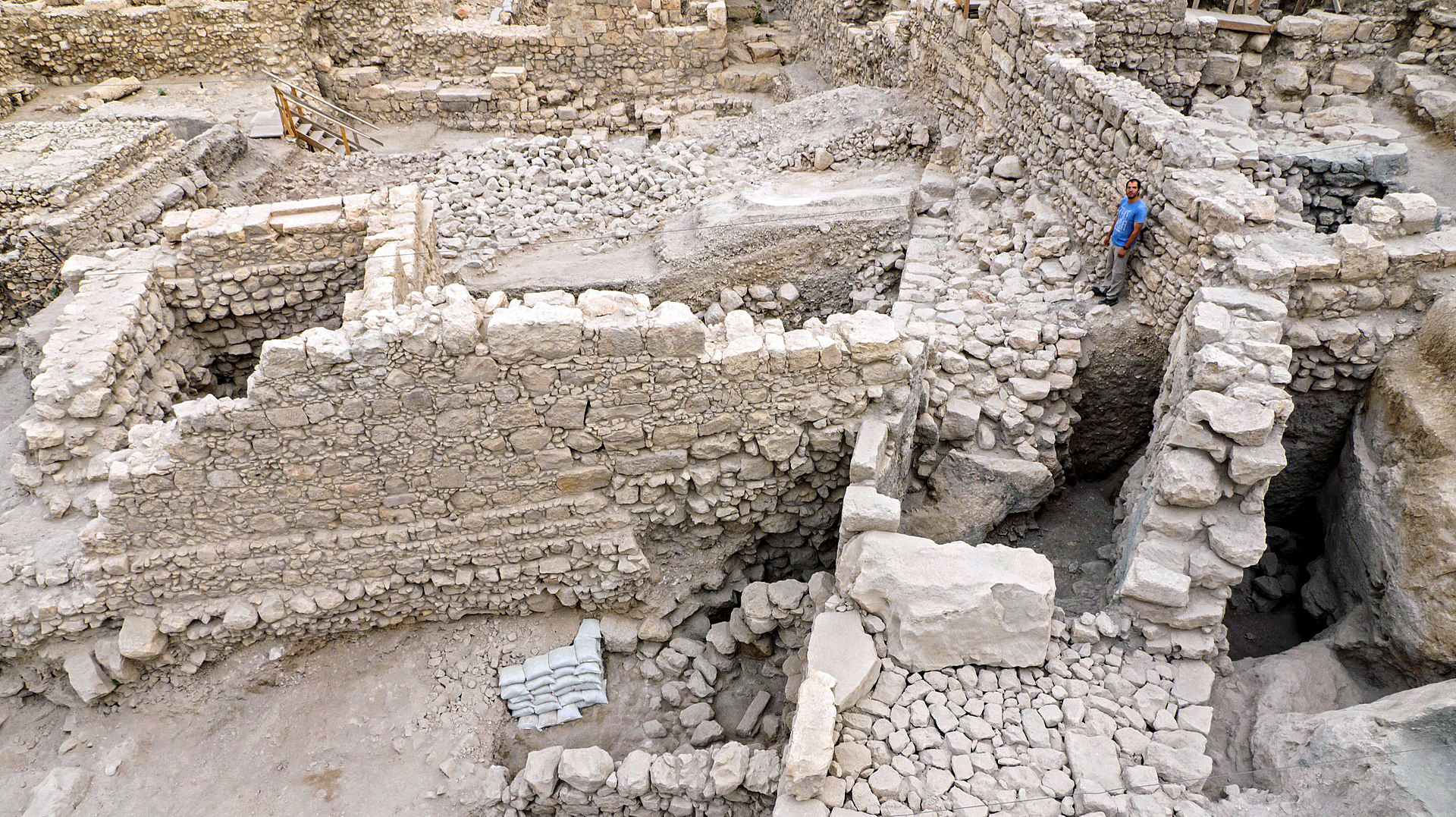

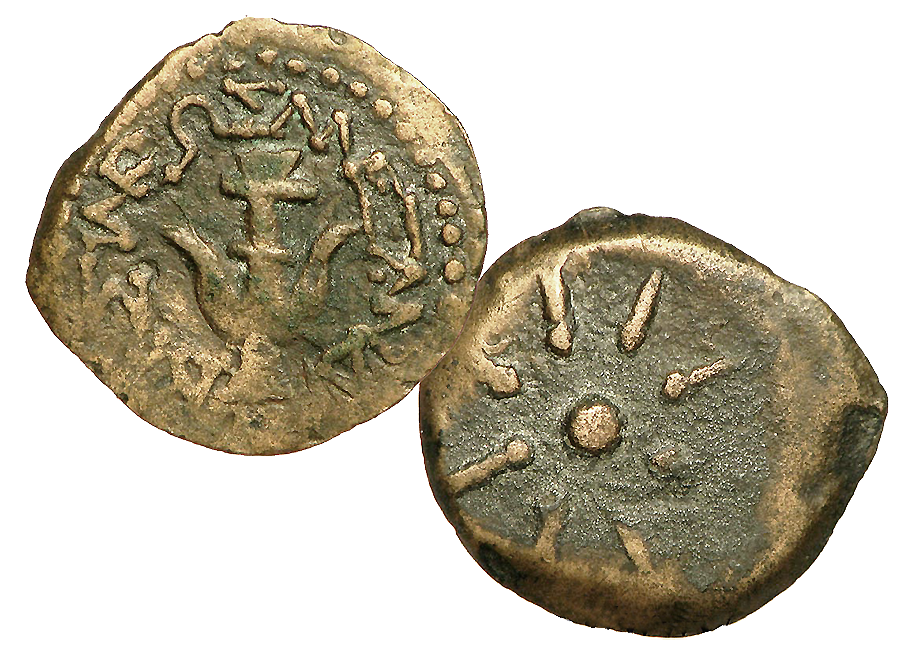 Image opposite: a copper coin, prutah, by Alexandre Jannée.
Image opposite: a copper coin, prutah, by Alexandre Jannée.